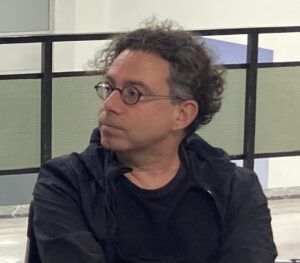
The sailboat of Ikaros,
Icarus / Rhodes. An emblematic ceramics factory in Rhodes – initially under Italian direction during the interwar period and later – after the liberation of the Dodecanese – under the direction of Kostas Hadjicostantis.
An attempt to modernize the local economy, but also a radical change of the product: from the utilitarian to the decorative ceramic, with an eye to the emerging tourist market. A new production line is thus set up, to revive the decorative repertoire of traditional, Ottoman ceramics that existed in large quantities in the popular and urban houses in Rhodes and especially Lindos.
On the famous plate walls of the island there were rows of ceramic plates from Iznik, Kütahya, and Çanakkale. A plethora of dishes decorated with floral motifs, with carnations and tulips, but also with sailing boats, which decorated the walls of the captains’ houses.
The dominant, through the centuries, aesthetics that preserved the materiality of things. The ceramics of Icarus are formed in the horizon of this genealogy, through which they recover their powerful identity.
The ceramics of Icarus depict old themes that are being revived. That’s why they are loaded with destiny, as Benjamin would say. Gestures within a tradition of figures that constantly illustrate their historical traces. The sailing boats sail here with a new breeze, as does their floral decoration rustling in its faience plain.
These are images that have not lost their memory, but perhaps something of their “depth”. Images that recur, even in the production of Icarus, again and again. Their resilience, the same boat, an insightful ad infinitum, which does not denervate the images in their perpetual repetition, but constantly rediscovers them restored. The images return because that is the only way they confirm their existence.
The little girl in the 1950s photo, painting the boat on a plate by Icarus, is actually surrendering it to its destiny, which is the cycle of its returns. In the dome of tradition what comes from the past is also what always remains new, because it belongs and does not belong to human time, it belongs only to the “again and again”, to the perpetual cycle of its return, to the life-giving gesture of repetition.
“Hic Rhodus” exhibition takes place in such an environment of emotion. It attempts to trace lost and found signs, signals of a withdrawn world. Icarus is a relatively recent history, but it is also a history already lost. Its unchanging world bears witness to something, but at the same time leaves something in its silence. The artists in the exhibition are in turn invited to take on, in the aesthetic environment of their time, precisely this experience of recall. To recall in their work the memory of Ikaros and to confront its fascination. It is not the formalistic approach that dictates their work, but the transparency of a decorative writing that has its signs, this flowery decoration, the mythical sage leaf, sailing ships, deer and birds. A well-established aesthetic environment that, always in time, holds true to its truth.
Ikaros’ people. Three people I dare to distinguish or maybe they distinguished me. Egon Huber “ a lonely, tall, blonde man who lives in a constant melancholy and desires nothing but creation”, that’s the way Lawrence Durell describes him. In 1930 he abandons Vienna, heading to Alexandria. A tempest washes away his boat at Rhodes, where he falls in love with the island and decides to live there forever. In 1934 he takes over as an artistic director of ICARO -RODI where he will establish a series of designs in the production. The Madonna of Filerimos is also one of his works. Nikolas Yiasiranis, a folk potter from Archangelos village is hired by Ikaros as a wheel potter . Huber often visits him in Archangelos . In 1942 he leaves Icaro and returns to his humble workshop. Using his poor resources, his scent materials and the knowledge acquired while working in Ikaros he wonders around with his donkey in order to sell them. Last but not least, Eleni Koutouni, the girl in the photograph who colors Ikaros’ sailboat in 1947, left in 1957 for Australia… I know nothing else about her.
In the work “In reverse”, by Leoni’s Yagdzoglou, the decorative surface of an Icarus plate is imprinted on the tablecloth of an old rotunda, with an unscented vase standing at its centre. The decorative writing abandons its ceramic surface and invests the intimacy of a festive meeting, the Sunday family table, celebrates it in its energy, ultimately inscribes it. In the work “Grid I”, by Apostolos Karakatsanis, the wind that blows the sails on the boats of Icarus, its breaths that become sails, their form, their repetitiveness, is shaped. The sailboat of Ikaros is also illustrated in the ceramic vase of Dimitris Neveskiotis, a boat being devoured by a giant octopus, illustrations have always traced this very borderline. “Rest Life – Icaro”, by Maria Ikonomopoulou, is a paper-cutting work, a paper bouquet, made of photographs of Ikaros’ flowers, displayed in its packaging box, a reference to the tourist market that traveled Ikaros’ ceramics around the world. In the works “Gate” and “Death on a Deer” by Natalia Manta, two large-scale plates, painted with Icarus motifs, but also with symbolic, dreamlike figures of the artist, worlds that combine traditional and personal emotion, small revelations on the borders of fantasy and reality. The Icarus deer, one of its most characteristic decorations, inspires many of the artists in the exhibition. The deer that has symbolized, since antiquity, the human soul, this sacredness of its gaze, its silence, its stillness.
In the artwork «A monument for the youth», by Giorgos Tserionis,a totemic sculptural installation, topped by a carved deer with its antlers hanging on its back, a defeat, or a glory; a commentary by the artist on violence, its acquired or inherent trace. Dionysis Christofilogiannis’ “Ethereal Leap” is a metallic outline of a deer in a dynamic movement, resting on a 3.50-meter-high metal tube, a monumental sculpture that resembles weather vanes. On another scale, the same reference again, Kyriaki Mavrogeorgi’s small porcelain deer, standing in a flowery environment – “Primavera” is the title of the work. Tulips, that beloved flower of Ottoman ceramics that will also overwhelm the ceramics of Ikaros. A tulip scratched on a blue velvet, a characteristic gesture in Maro Michalakakos work, an image that here assumes a weighty shape, I would say a mournful shape, the depth of its eternal return, what comes back is also what establishes memory in the oblivion of time. In her ceramic vase entitled “Lafina”, Ioanna Hadjipanigiri draws two female hands framing a floral environment, a reference to the female workers of Ikaros who had to speedily decorate dozens of ceramics daily to get to market, the handles of the vase are shaped into deer that resemble tourist souvenirs, another reminder of the tourist market. In “The hearafter”, Maria Oikonomidou, copies on the ceramic surface of a large vase, the floral decoration of Ikaros, and the animals that had a central place in it. But here we have hybrid creatures that transform and expose their fluid identity, their playful character, a fairy-tale revelation. We find a similar dramaturgy in Stella Kapezanou’s “Rhodian Night”, where hybrid creatures of the imagination rage within the dome of a bulging night of their own. In the second work of her trilogy entitled “Garden of Eden”, we have a reference to Egon Huber’s heavenly composition, an emblematic work of Icarus’ ceramic production, where the heavenly archetypal nature exposes its phantasmagoria, its exuberance; in the third work, entitled “Icarian Sea”, we have again the boat of Ikaros, its turbulent sailing, the intimate yet picturesque archipelago with its flags and the octopus drying in the sun, this lightness of tourism iconography. Constantine Ladianos continues the practice of applying to his ceramic sculpture figures from his painting, but here he copies from an Ikaros dish, a plump peacock in all its indeed glory. In his sculptural work ‘Dwarf Bather’, Dimitris Fragakis depicts a dwarf at the Colossus of Rhodes, a typical Rhodian figure that was strangely absent from Icarus’ decorative repertoire. In a grotesque pose here, this Colossus borrows something from the om the ceramic tradition of Icarus, the turquoise color of its waves, their iridescence, and recognizes there its unique bi- obscurity.
